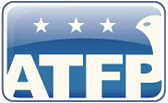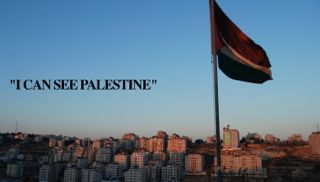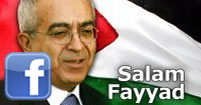Israel, West Bank, and Gaza
Twenty-seven Israeli civilians were killed in at least 10 separate terrorist attacks during the year, up from six attacks in 2007. Israel continued to experience terrorist threats emanating from the West Bank and Gaza. Rocket and even more accurate mortar fire emanating from the Gaza Strip were Palestinian terrorist organizations' preferred form of attack, while incidents of Palestinian suicide bombings continued to decline relative to previous years.
Israel responded to the terrorist threat as it has in recent years, with operations targeted at terrorist leaders, terrorist infrastructure, and active terrorist activities such as rocket launching groups. Israel Defense Forces (IDF) and Israel Security Services (ISA) incursions into the West Bank continued to conduct roundups and other military operations designed to increase pressure on Palestinian terrorist organizations and their supporters. The Israeli security services also imposed strict and widespread closures and curfews in Palestinian areas. By some reports, Israeli military operations in 2008 killed an estimated 782 Palestinians in the West Bank and Gaza, including at least 315 by year's end as a result of Israeli Air Force (IAF) airstrikes.
Radical groups used Gaza casualties for propaganda purposes. Due to budgetary constraints, construction on an extensive security barrier in the West Bank and Jerusalem was sporadic in 2008. Israeli officials believed the separation barrier played an important role in making terrorist attacks more difficult to undertake.
Terrorist attacks in Israel and the West Bank included the following:
- On February 4, a Palestinian suicide bomber struck a shopping mall in the southern town of Dimona, killing one person and injuring nine others. Israeli police killed a second attacker before he was able to detonate his bomb belt. Two terrorist groups, the al-Aqsa Martyrs' Brigade (AAMB) and the Popular Front for the Liberation of Palestine (PFLP), claimed joint responsibility for the attack.
- On March 6, a Palestinian resident of East Jerusalem shot and killed eight students and wounded 11 others at the prominent Mercaz Harav Kook Yeshiva (Jewish religious school) in West Jerusalem. An off-duty soldier entered the yeshiva and killed the assailant.
- On April 25, a terrorist operating on behalf of HAMAS and the Palestinian Islamic Jihad (PIJ) infiltrated Israel from the West Bank and shot to death two civilian security guards at an industrial park near the village of Qalansuwa.
- On June 1 and 20, Israeli settlers fired three rockets toward the Palestinian town of Burin. In late July, settlers threw a Molotov cocktail into a home in Burin as well. No injuries were reported from either attack.
- On July 2, a Palestinian resident of East Jerusalem killed three people and wounded at least 18 others with a bulldozer in West Jerusalem before being shot and killed by an off-duty soldier. The government defined the incident as a terrorist attack, but police were unable to determine a clear motive.
- On July 22, a Palestinian resident of East Jerusalem wounded at least 16 people with a bulldozer on a busy West Jerusalem street before being killed by police. The attack was widely viewed as a copycat of the July 2 attack.
- On September 25, a prominent Hebrew University professor and critic of Jewish settlements in the West Bank was wounded when a pipe bomb, allegedly planted by radical members of the settlement movement, exploded as he opened the door of his home in West Jerusalem. After the attack, police found flyers near the academic’s home calling for the establishment of a new state in the West Bank based on Jewish religious law. The flyers, signed by a Jewish extremist group called the Army of the State Liberators, also offered USD 314,000 to anyone who killed a member of the non-governmental organization, Peace Now. Israeli Security Services continued to investigate the attack.
- During the year, rocket, mortar, and sniper fire from the Gaza Strip killed eight Israeli civilians and one Ecuadorian kibbutz volunteer.
Throughout the year, Israel's security services were able to keep terrorist planners and operators off balance, reporting multiple foiled attempts:
- On January 16, IDF, Civil Administration, and police forces intercepted a truck containing 800 kg of potassium/nitrate at the Eliyahu border crossing south of Qalqiliya, West Bank. Potassium nitrate is a banned substance in Gaza and the West Bank due to its use in the manufacturing of explosive devices and Qassam rockets.
- On November 4, IDF and security forces discovered a tunnel situated 250 meters from the Gaza security fence that they believed would be used for the abduction of IDF soldiers. Israeli forces killed several militants during an ensuing firefight.
- On November 12, IDF forces killed four armed militants in Gaza that were attempting to place an explosive device near the Gaza security fence.
- On November 28, IDF forces identified another attempt by militants to lay an explosive device at the Gaza security fence near Khan Yunis. In an ensuing firefight, IDF forces killed one terrorist and wounded four others.
The smuggling of commodities, arms, explosives, and funds in support of terrorist groups such as HAMAS through tunnels along the Philadelphi Route between the Gaza Strip and Egypt remained problematic. On January 23, HAMAS terrorists blew up several sections of the border fence separating the Gaza Strip from the Egyptian town of Rafah. According to the Israeli Ministry of Foreign Affairs (MFA), HAMAS used this opportunity to smuggle explosives, anti-tank, and anti-aircraft weapons into the Gaza Strip.
Despite the fact that the IDF thwarted the above-mentioned attacks, terrorist groups conducted mortar attacks against the Israeli-manned crossings between Gaza and Israel, and Qassam rocket launches from Gaza that terrorized Israeli communities abutting Gaza. Palestinian terrorists routinely fired rockets and mortars at Israeli civilians from the Gaza Strip despite an Egyptian-negotiated truce or cease fire between Israel and HAMAS that began on June 19. According to the Israeli MFA, Palestinian terrorist groups fired approximately 1,750 rockets and 1,528 mortars into Israel in 2008, up from 896 rockets and 749 mortars in 2007. Rocket and mortar attacks began to escalate toward the end of the year; the MFA estimated that Palestinian terrorist groups fired 213 rockets and 126 mortars at Israel from November 4 to December 18 in the lead up to the end of the ceasefire. On December 17, the press reported that terrorist groups in Gaza fired 25 Qassam rockets at Israel. On December 18, HAMAS leadership announced the end of the ceasefire. In total, 361 rockets were launched on Israel from Gaza during the month of December. Targeted Israeli towns included Sderot and Ashkelon, as well as a number of nearby agricultural collectives (kibbutzim) and IDF bases. Palestinian terrorist groups increasingly used 122 mm Grad missiles, which landed in or near Ashkelon. While there were no fatalities resulting from rocket and mortar attacks between the June 19 ceasefire and December 18, these attacks resulted in numerous cases of shock and property damage, and disrupted daily life.
The reliance on rockets reflected technological advancements that allowed groups to manufacture the rockets cheaply, stockpile them, and launch them greater distances. As the rockets' ranges continued to increase, Israeli authorities in the port city of Ashdod initiated emergency response training in anticipation of eventual rocket attacks in their city. Mortars were used mainly against Israeli targets within or on the edge of the Gaza Strip, to include crossings, which had the effect of closing the crossings to the detriment of Gaza's residents.
From February 29 to March 1, the IDF conducted Operation Warm Winter against terrorist targets in Gaza. Following the November 4 tunnel discovery along the Gaza security fence, Israel undertook small-scale military operations and airstrikes against suspected launch teams and sites in Gaza. The Israeli Air Force increasingly launched airstrikes against launch teams in November and December following escalations in rocket and mortar attacks. Israel launched Operation Cast Lead in Gaza on December 27 in response to these rocket attacks. In the first few days of the operation, the Israeli air force and navy conducted a heavy bombardment of HAMAS targets in the Gaza Strip, including bases, training camps, and suspected weapons caches. These actions caused civilian casualties and some international observers alleged that the Israeli response was disproportionate.
Israel's security establishment remained concerned about the terrorist threat posed to Israel in the north by Hizballah and its Iranian and Syrian sponsors. Israeli security officials said Hizballah continued to provide support to select Palestinian groups to augment their capacity to conduct attacks against Israel. Throughout the year, Israeli officials claimed publicly that Hizballah had completely replenished its ranks, possessed more short and medium-range rockets than it had before the 2006 war, had moved arms back to southern Lebanon, and was providing training to HAMAS operatives from Gaza. While Israel's northern border remained comparatively quiet, the IDF continued a strong exercise schedule and military presence in the Golan Heights.
HAMAS and Hizballah continued to finance their terrorist activities against Israel mostly through state sponsors of terrorism Iran and Syria, and through various fundraising networks in Europe, the United States, the Middle East, and to a lesser extent, elsewhere. The funds channeled to these organizations frequently passed through major international financial capitals, such as Dubai, Bahrain, Hong Kong, Zurich, London, or New York. Unlawful funding bound for terrorists that may pass through Israel's financial sector, however, was well monitored and often blocked. Israel has adopted strong measures to prevent terrorist financing through its financial sector or through the smuggling of financial instruments. Regulation and enforcement of its domestic financial industry was equivalent in scope and effect to other highly industrialized and developed nations. Israel's Counterterrorist Finance regime is administered as part of its Anti-Money Laundering program (AML/CFT).
The Israeli National Police (INP), with the advice of the security services, is charged with enforcement of counterterrorist finance laws. Regulation of and intelligence on financial crimes is coordinated by the Israel Money Laundering and Terror Financing Prohibition Authority (IMPA), in coordination with the National Security Council. The INP reported no indication of an overall increase in financial crime relative to previous years. The IMPA received approximately 17,152 suspicious transaction reports, disseminated 529 intelligence reports to law enforcement agencies and to foreign Financial Intelligence Units, and reported that approximately USD two million was frozen or forfeited in AML/CTF-related actions.
On the law enforcement front, the ISA and INP continued to cooperate with U.S. law enforcement agencies on cases involving U.S. citizens killed in terrorist attacks. On October 29, the Knesset, the Israeli parliament, voted to continue work on a biometrics bill by sending it to the Constitution, Law, and Justice Committee for further work. The bill proposed that Israel switch to "smart" identification methods such as fingerprints and digital photographs on identification cards and passports.
The Israeli government released convicted Lebanese terrorist Samir Kuntar and four Hizballah militants on July 16 in exchange for the remains of two Israeli soldiers whose capture by Hizballah sparked the 2006 War with Lebanon.
The Israeli Counterterrorism Bureau issued a warning in October in advance of the Jewish holiday season that terrorist groups may attempt to kidnap Israeli tourists in the Sinai. Terrorists held hostage and later killed four Israeli citizens at the Chabad House as part of the November 26 attacks on Mumbai, India.
West Bank and Gaza
The Palestinian Authority's (PA) counterterrorism efforts improved in 2008, with Prime Minister Salam Fayyad's government engaged in efforts to control terrorist groups, particularly HAMAS. The PA was unable to undertake counterterrorism efforts in the HAMAS-controlled Gaza Strip, however. Besides being responsible for hundreds of rocket, mortar, and small arms attacks into Israel, HAMAS and other armed groups in Gaza engaged in tunneling activity, and smuggled weapons, cash, and other contraband into the Gaza Strip. HAMAS has created its own security forces in Gaza, built around its military wing cadres, which now number at least 15,000. In the West Bank, PA security forces (PASF) followed up on efforts to establish law and order and fight terrorist cells with security deployments to Jenin, Bethlehem, and Hebron. All observers, including Israeli security officials, credited PASF with significant security improvements across the West Bank.
Terrorist groups such as HAMAS, Palestinian Islamic Jihad (PIJ), Popular Front for the Liberation of Palestine (PFLP), and the al-Aqsa Martyrs Brigades (AAMB) remained active, but their ability to carry out attacks from the West Bank has been degraded. Extremist settler groups were also a threat in the West Bank, and have engaged in attacks against Palestinians and incitement against Palestinians and Israeli security forces.
The primary PA security forces are the National Security Forces (NSF), police, Preventive Security Organization (PSO), Presidential Guard (PG), General Intelligence (GI or Mukhabarat), and Civil Defense. All forces are under the Interior Minister's operational control and follow the Prime Minister's guidance. In the Gaza Strip, HAMAS has established separate internal intelligence, police, coastal patrol, border guard, and "Executive Force" organizations. HAMAS military-wing members were often integrated into their ranks. Militias in Gaza such as the HAMAS and PIJ military wings, the AAMB, and an assortment of clan-based armed groups also carried out attacks against Israel.
Palestinian terrorist groups, particularly PIJ and HAMAS, received substantial foreign funding and support from foreign terrorist organizations, mainly those based in Syria and Lebanon. The PA has aggressively pursued HAMAS-linked groups and institutions in the West Bank, but has not fully dismantled HAMAS or other terrorist organizations and their infrastructure in territory under its control. In March, a HAMAS cell from the southern West Bank carried out a suicide bombing in Dimona, Israel, killing an Israeli woman. In April, PIJ gunmen infiltrated the Tulkarm industrial area and killed two Israeli security guards.
The situation in and around Gaza was much worse. In April, HAMAS gunmen killed two Israeli civilians at the Nahal Oz fuel terminal after infiltrating into Israel. Over 3200 rockets and mortars were fired from Gaza into Israel in 2008, killing eight Israelis and one third-country national, and causing several injuries. HAMAS also engaged in tunneling activity and smuggled weapons, cash, and other contraband into the Gaza Strip.
No progress was made in apprehending, prosecuting, or bringing to justice the perpetrators of the October 2003 attack on a U.S. Embassy convoy in Gaza that killed three USG contractors and critically injured a fourth.
Cooperation between the PA and the Government of Israel security services improved in 2008. Nevertheless, PASF commanders have complained that the IDF did not coordinate counterterrorism efforts with them and conducted unilateral raids in towns in Palestinian areas. The PA protected and returned several Israelis, including IDF soldiers, who had inadvertently entered Palestinian cities, including Jenin, Jericho, and Bethlehem.
The United States worked with PA security commanders to assist their CT efforts, including in its deployments to Jenin, Bethlehem, and Hebron. The Antiterrorism Assistance Program provided training for over 200 PA security personnel, primarily members of the Presidential Guard.
In the West Bank, PASF’s ability to counter terrorism was hindered by a lack of resources, unclear chain-of-command, and IDF-imposed restrictions on their movement, equipment, and operations. PASF officials frequently raised concerns about operational difficulties due to IDF restrictions on PASF movements. Efforts to arrest and prosecute terrorists were also impeded by a disorganized legal system and inadequate prison infrastructure. PA courts were inefficient and failed to ensure fair and expeditious trials, while most Palestinian prisons were destroyed in Israeli military operations during the second Intifada and have not been rebuilt.
President Abbas and PM Salam Fayyad have publicly and consistently supported a security program that includes disarming fugitive militants, aggressively arresting members of terrorist organizations, and gradually dismantling armed groups. PM Fayyad has condemned violence against Israelis in harsh terms and taken rapid action against those involved in attacks. Since becoming Prime Minister, Fayyad has condemned every attack against Israelis as contrary to Palestinian interests and commitments, and has ordered immediate action, including arrests and prosecutions.
The Palestinian Monetary Authority (PMA) continued building a Financial Follow-Up Unit (FFU) and developing capacity to track and deter financial transactions used to fund terrorist activity. The PA Cabinet improved efforts to counter terrorist financing, and the Finance Ministry worked with the Justice Ministry, Attorney-General, Supreme Judicial Council, and (as appropriate) Interior and Waqf Ministries to shut down illegal NGOs and charities. USAID supported the PA’s financial sector reform efforts through its Modernizing Financial Institutions project. The PA enacted Anti-Money Laundering (AML) legislation in late 2007 and used its provisions to freeze suspect bank accounts, although the law does not criminalize all terrorist financing activities. The PA continued to experience substantial shortcomings in investigating and prosecuting financial crimes due to personnel shortages and limited technical expertise in law enforcement and the judiciary. The PA is also lagging in its implementation of the AML law due to limited regulatory guidance for the private sector.
United States Department of State - April 30, 2009 - Back to Resources Page
Did we miss something?
Click here to suggest a state building resource to be added to our fast-growing archive!
















